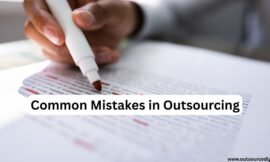Choosing the right software development model can make or break an outsourced project. Between Agile and Waterfall, the debate is ongoing—but the best choice depends on your goals, constraints, and collaboration style.
In this guide, we’ll compare Agile vs Waterfall across critical areas of outsourcing: flexibility, communication, risk management, timelines, and more. By the end, you’ll know exactly which model fits your project in 2025.
Related: New to development models? Start with our SDLC Complete Guide
Agile vs. Waterfall: Quick Definitions
Agile Model
- Iterative and incremental
- Focuses on flexibility and customer collaboration
- Works in sprints with continuous feedback
Waterfall Model
- Linear and sequential
- Emphasizes detailed planning and documentation
- Each phase must be completed before the next begins
Agile = adaptability | Waterfall = predictability
Key Differences Between Agile and Waterfall in Outsourcing
| Factor | Agile | Waterfall |
|---|---|---|
| Approach | Iterative | Linear |
| Project Requirements | Can evolve during development | Fixed upfront |
| Client Involvement | High – continuous feedback required | Low – mostly at start and end |
| Delivery | Working software in short cycles (sprints) | Final product at the end |
| Risk Management | Early detection through continuous testing | Risk accumulates until late stages |
| Communication | Daily/weekly check-ins | Formal reviews at phase milestones |
| Flexibility | Very high | Very low |
| Documentation | Lightweight, evolves over time | Heavy, defined at the start |
| Time-to-Market | Faster for MVPs or incremental launches | Slower due to upfront planning |
| Best Fit For | Startups, SaaS, evolving products | Government, compliance-heavy, fixed-scope projects |
When to Use Agile in Outsourced Projects
Agile is ideal for:
- Startups building MVPs
- SaaS products need frequent updates
- Teams open to rapid change and experimentation
- Projects where client involvement is active
- Projects with unclear or evolving requirements
Benefits of Agile in Outsourcing:
- Fast iteration and delivery
- High adaptability to changes
- Strong collaboration through sprints
- Early feedback reduces rework
- Great for long-term partnerships
Challenges:
- Requires constant communication (can be hard across time zones)
- Not ideal for teams unfamiliar with Agile culture
- May lack fixed scope and cost clarity
Deep dive: Agile Model in Software Development
When to Use Waterfall in Outsourced Projects
Waterfall is best for:
- Well-defined requirements with little expected change
- Government and enterprise RFPs
- Projects with strict documentation needs
- Teams that need rigid contracts and scope control
Benefits of Waterfall in Outsourcing:
- Clear scope, budget, and timeline
- Detailed documentation simplifies handoffs
- Easier vendor accountability with phase-based tracking
- Suitable for fixed-price outsourcing contracts
Challenges:
- Difficult to adapt mid-project
- Clients can’t test or review until the late stages
- Higher risk of rework if early assumptions are wrong
Read more: Waterfall Model in Software Development
Agile and Waterfall in Real Outsourcing Scenarios
| Project Type | Recommended Model |
|---|---|
| Government portal | Waterfall |
| Healthcare record system | Waterfall (compliance-heavy) |
| Startup mobile app | Agile |
| SaaS dashboard with monthly features | Agile |
| ERP implementation with fixed modules | Waterfall |
| Education platform MVP | Agile or Iterative |
Can Agile and Waterfall Be Combined?
Yes—some outsourced projects use a hybrid model:
- Agile-Waterfall Mix (Agifall): Use Waterfall for planning & requirement stages, then switch to Agile for iterative development.
- Useful when clients need structure, but vendors want speed & flexibility.
How to Choose the Right Model for Your Outsourced Project
Ask yourself these 5 questions:
- Are your requirements fixed or evolving?
- How involved can your team be during development?
- Do you need full control over budget and timeline from day one?
- How quickly do you want to launch a working product?
- Is your outsourcing partner Agile-experienced?
If your answers lean toward flexibility, speed, and collaboration → go Agile.
If your answers lean toward control, documentation, and predictability → choose Waterfall.
Final Thoughts
There’s no one-size-fits-all approach when it comes to Agile vs. Waterfall in outsourced software projects. What matters most is aligning the model with your project’s nature, your team’s capacity for collaboration, and your outsourcing partner’s strengths.
In 2025, successful businesses don’t just choose a model—they choose the right model for the right job.







